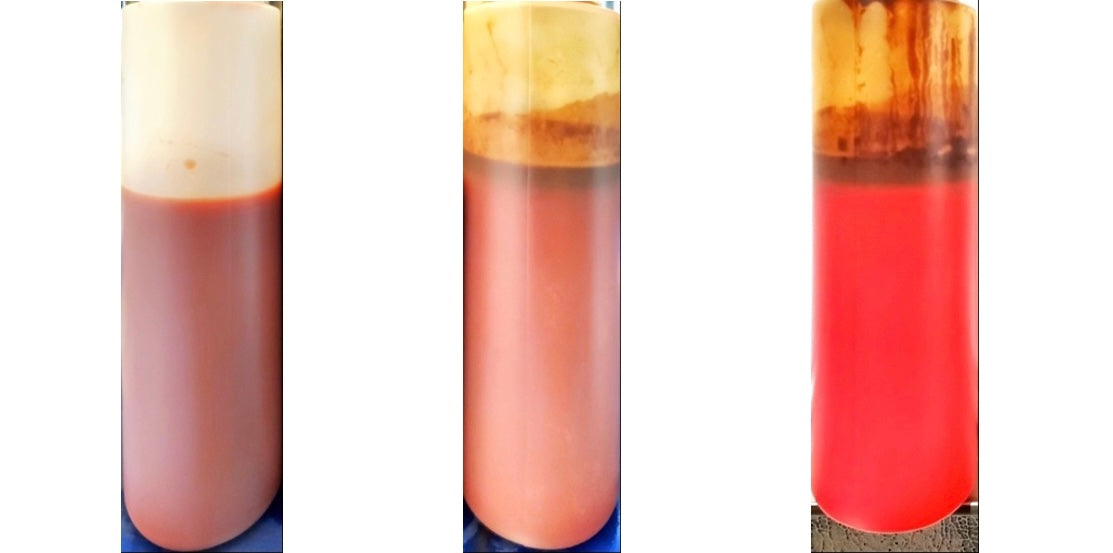- INFO
- DIRECTIONS
- SAFETY
Royal Flush Family
ENHANCED COOLANT ANALYSIS
GET TESTED
Our chemicals have been specifically formulated and developed for industrial engines and cooling systems in oil & gas, pipeline compression, locomotive, power plants, and marine industries.
Internal
CRI - Corrosion Rust Inhibitor
- CRI is designed and formulated to separate corrosion & rust from your entire cooling system.
- Prohibits rust buildup/deposits without rodding, high pressure lancing, or soaking in a hot vat offsite.
- Maintains your cooling system back to a normal operating level.
- Commissioning a new unit initially with CRI, will ensure a rust-free, zero-hour cooling system.
- Get the most hours out of your systems with less downtime.
Executive Summary
Rust Inhibitor performance is demonstrated by Dynamic Scale Loop Testing.
Test methods utilized, and results obtained are discussed below.
The best technical performance evaluations are presented in this report.
Evaluation of this data proves effectiveness and ensures the best economically solution.
Corrosion Wheel Testing Test Method
The procedure utilized in the wheel box testing is as follows:
- Testing uses 1018 carbon steel coupons.
- Coupons are washed in xylene for 2 minutes.
- Coupons are washed in methanol for 2 minutes.
- With gloved hands, wipe coupons with “kimwipes”. Dry for 15 minutes.
- Determine Initial Weight for each coupon.
- Label each container to be used.
- Prep water and oil with desired amounts of CO2 and H2S (Sodium Sulfide).
- Pour desired ratio of oil and water into bottles.
- Inject chemical into bottles.
- Set bottles in wheel apparatus.
- Set temperature to desired setting.
- Set RPM to desired speed.
- After desired run time, remove coupons. Rinse with xylene to remove oil.
- With gloved hands, scrub coupon lightly with an SOS pad.
- Rinse with tap water and wipe clean.
- Let coupon air dry.
- Place in bead blaster for 8 minutes.
- Determine Final Weight for each coupon and calculate corrosion rate.
Results
Synthetic brine was used based on the analysis of a water sample provide. Target composition of the water is shown in a table below. The testing utilized a 75% water and 25% ethylene glycol. Headspace was flushed with clean compressed air to ensure an aerobic environment. A sample was left untreated to be used as a Blank control sample for the water. The test duration of these runs were 96 hours at 180°F.
Continuous treatments were dosed at the listed rate for the full run time.
Pictures of the coupons were taken after the designated run period; before cleaning and after cleaning. Test data and pictures are provided below.




Conclusion
Testing shows oxidation on the surface of the untreated coupon. On the treated coupon at 3% minimal oxidation is seen as speckling near the center of the coupon. At the 4% test point almost all of the oxidation on the surface is no longer present. No oxidation was seen on the surface of the 5% or 6% coupons. Based on weight lost during the testing period the 4% performs just under the typical threshold of 90% protection for weight loss. Increasing up to the 6% concentration provides near complete inhibition of corrosive effects.

DILUTION
Ready To Use
Ultimate Chemicals
CRI - Corrosion Rust Inhibitor
For 25% Ethylene Glycol - 75% Water
6% solution suggested
For 50% Ethylene Glycol - 50% Water
3% solution suggested
CRI - Corrosion Rust Inhibitor - SDS








